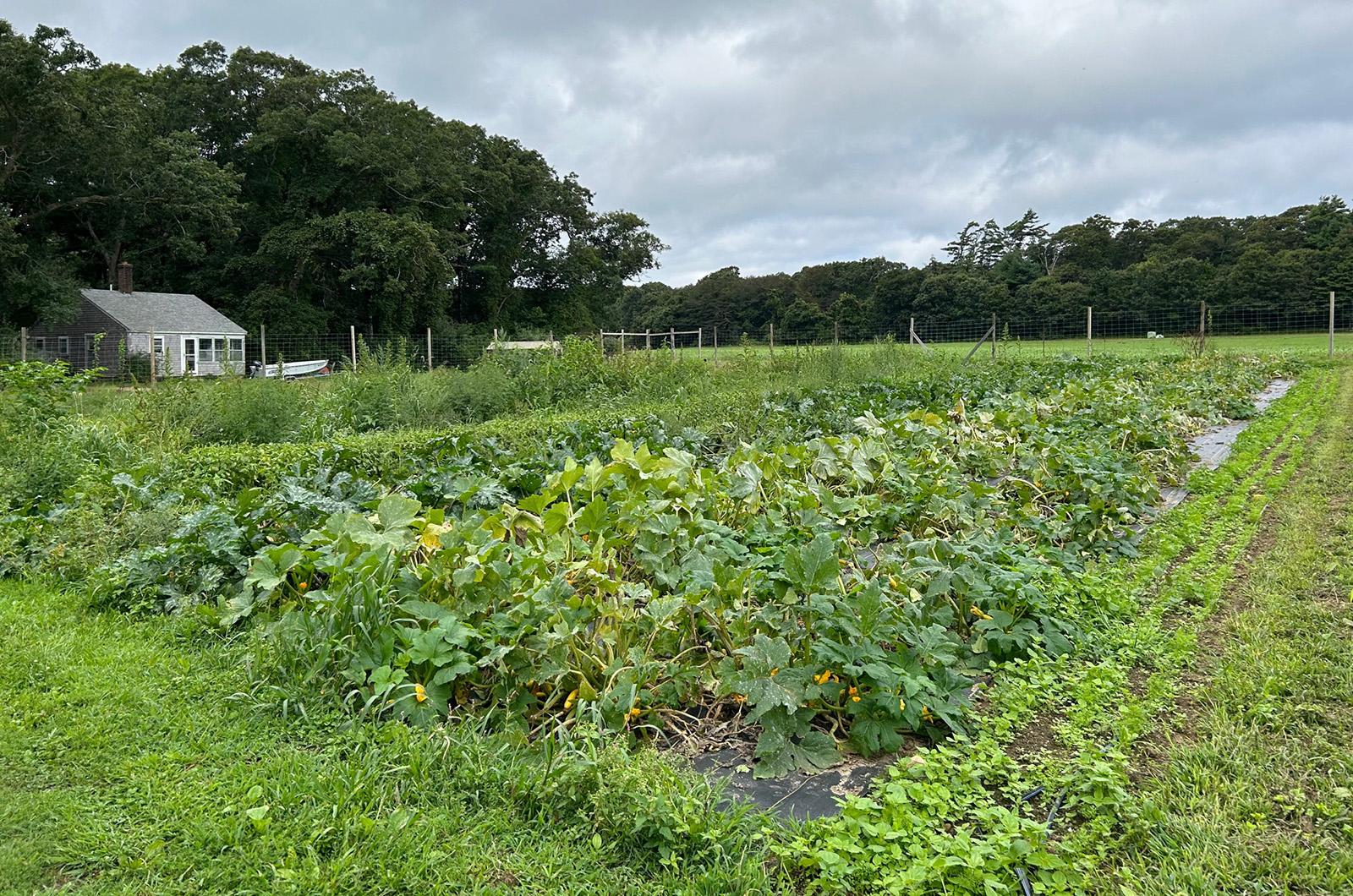I pulled into Ghost Island farm on Monday, stared at the bees and tall pink mallow flowers through my windshield, and reviewed my mission. I had come in search of melons and had no idea if I would find them.
The fruit, whether watermelon, cantaloupe or one of the more uncommon varieties, is a sure sign of late summer. Throughout sweltering midsummer months, those rindy fruit lounge in the field as ever-stretching vines photosynthesize sunlight into sugary melon flesh.
Now that process is complete and melon mounds have been appearing in farmstands across the Island. North Tabor farm has been bringing in watermelon, as have Morning Glory and Whippoorwill. Beetlebung has been harvesting two varieties of yellow-fleshed watermelon this year along with cantaloupe, which Morning Glory has as well.
On North Tisbury Farm, meanwhile, dainty cucamelons are being harvested. Around the size of a grape, these little fruits look a bit like mini-watermelons and taste like a lemon-flavored cucumber.
In fact, if we might stretch the taxonomic definition of the melon for a moment, I would be remiss not to mention the plentiful squash and cucumber now being harvested, both of which join the melon as members of the venerable Cucurbitaceae family.
Somehow, I got it into my head that Ghost Island, too, was growing melon this year and decided to make a trip up to see their fields in person. When I called ahead to ask if I could come by for a visit — and after I convinced them that my call about the melon operation was not a prank — I was told to come over any time.
Thus, I arrived at the farm this week, on the hunt for a melon patch. There I was greeted by Henry Danielson, one of the farmers and the person who picked up my phone call the other day. Mr. Danielson is a lifelong Islander, he said, and has been working on the farm, along with his mom and brother, for about a year.
“I love it here,” he said of his experience at Ghost Island. “This is a real, working-class people’s farm.”
With farm operators Rusty Gordon and Sarah Crittenden otherwise preoccupied that morning, Mr. Danielson offered to give me a tour of the fields in search of melons.
“We’re kind of on the downswing of a large harvest,” he said, as we walked the fields behind the farmstand. Major summertime hauls of basil, squash and tomatoes are now in the stand, he said, while later season crops come into their own.
Despite our best efforts, however, we could not locate any melons in the field. A greenhouse chat with Ms. Crittenden later confirmed that they are not growing any melons this year.
Still, the visit was far from fruitless, so to speak. Over the course of our conversation, I discovered that Mr. Danielson and his family are now preparing for the annual apple harvest.
“My family grows the apples that we sell here exclusively,” he said.
Their orchard mostly consists of Creston apples and some heirloom breeds. Since apples aren’t true to seed, each tree is a Frankenstein creature, with branches from a desired breed grafted onto rootstock. The family does also have a seedling bed, he told me, growing some fruit from seed in the hopes of identifying solid new genetics.
“We’re rolling the dice. Trying to create our own apples,” he said.
Though a few early bird apples have been coming in here and there, Mr. Danielson said the big harvest won’t arrive until the end of September, when summer truly turns to fall.
They will be a fitting replacement for mid-August melons.





Comments (1)
Comments
Comment policy »